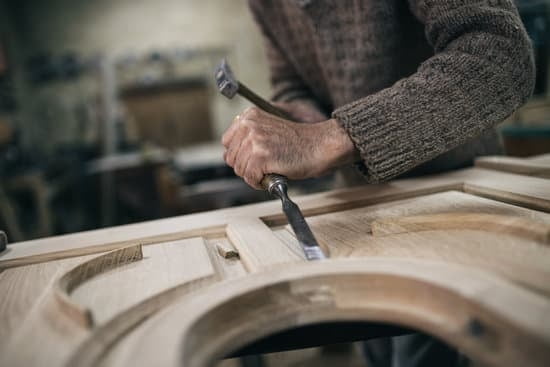Introduction
Sketchup Plugins for Woodworkers are a type of software designed to help woodworkers create detailed, three-dimensional models of their projects. These plugins have many features that are useful to both novice and experienced carpenters alike, such as drag-and-drop tools, automated layout tools and interactive cut list generation. By utilizing these tools, woodworkers can quickly and accurately create 3D models of their projects which can then be used to easily generate plans and drawings. Additionally, these plugins can also provide insight into how a project will look in the finished product before construction begins. This allows woodworkers to easily make adjustments or changes before the project is actually built. Further, Sketchup plugins for woodworkers can also be used to design custom furniture pieces or structures in order to better suit the need of any given room or space. With these plugins, carpenters can quickly bring their ideas to life while simultaneously testing them out in a safe environment before investing time and money into their creation.
Benefits of Using Sketchup Plugins for Woodworking
Sketchup is one of the most popular 3D modeling programs among woodworkers, and with good reason. The software is easy to use, efficiently organized, and comes loaded with tools that help bring projects to life. Additionally, its open-source nature enables users to access a wide range of Sketchup plugins for woodworking that often come for free. These plugins let you accomplish tasks quickly without sacrificing precision or craftsmanship.
First, many Sketchup plugins offer specific functions which make working with various materials much easier. Several specialize in helping woodworkers develop precise layouts, including jigs and patterns that can be used for carving and machine work. Other Sketchup plugins provide an array of custom tools for cutting, routing, sanding, drilling, joining pieces together and more – perfect for making intricate joints or preparing surfaces for finishing.
Another great benefit of using Sketchup Plugins is their ability to perform complex calculations automatically – something which would normally require careful measurements and trial-and-error processes. With the right plugin installed, you can quickly elevate your designs by adding consistent curves and shapes into them. Moreover, this helps streamline the entire creative process so you save time while still achieving impressive results.
Finally, some Sketchup Plugins provide scaling tools so it’s easy to adjust the size of existing layouts effortlessly when desired – ideal if you need to adjust the handle length on a door pull or tweak a design feature before beginning a project. All in all, these powerful assistants will help ensure your projects come out just as planned each time!
Popular Sketchup Plugins for Woodworkers
SketchUp is a popular 3D modeling software that is renowned for its ease of use and wide array of tools. Sketchup is especially liked by woodworkers, as it has a plethora of plugins specifically designed to assist them with their projects. Here are some of the most popular Sketchup plugins that woodworkers prefer:
1. Curviloft ” this plugin provides useful tools for manipulating curved surfaces, parametric shapes, and lofting operations. Woodworkers can take advantage of this plugin to create rounded edges, hollow circles, patterns, etc.
2. Bezier Spline ” this plugin helps woodworkers draw customized B-Splines and NURBS curves while they’re working on their projects in SketchUp.
3. Solid Inspector2 ” This plugin is used to detect solid errors so that users can quickly identify any problems associated with their designs before beginning the actual project. It also includes features such as face orientation recognition alongside hidden object detection to further ensure accurate designs for woodworking projects.
4. GDL Objects Aligner – Assembling wooden pieces evenly has become easy with this tool as it helps manage geometrical dimension objects by aligning them automatically along the X-Axis or Y-Axis or both (depending on user preference).
5. Follow Me Hatches ” the Follow Me Hatches plugin makes it easier for woodworkers to accurately make cutouts in their designs while they use the ‘Follow Me’ tool in SketchUp by allowing more control over cutouts such as line type and scale selection.
Tips and Tricks for Getting Started with Sketchup Plugins
Sketchup plugins can help woodworkers make complex designs faster and easier. With Sketchup, it is easy to bring ideas from the brain to the reality. Some of the more popular Sketchup plugins for woodworking projects include CAD-Tools, Custom Components, Layout & Dimensioning Tools, 3D Printing Exporter, Cut List Generator and Wood Shop Component Library.
Before diving into those particular Sketchup plugins it is important to first have some sort of plan or base design in place that Sketchup can either refine or build upon. Designers need to consider what they want to achieve with their project before beginning their work in Sketchup.
When it comes to learning how to use the many tools and features Sketchup has to offer, there are a variety of tutorials available on the internet that are designed for all levels of experience. Whether you are starting from scratch or just looking for ways to improve your skills, online tutorials can be very helpful in answering questions and pointing users in the right direction. Additionally, once you get familiar with how things work there are “plugins forums” available where users can discuss strategies and advice on how best to utilize the features offered by different plugins for Sketchup.
After gaining access some familiarity with the program new users may discover most of their workflow within sketch up leans towards one single plugin for specific needs needed for a project such as dimensioning and printing 3D models. By taking advantage of these single task specific plugins users will become more efficient as they explore additional methods of creating complex designs faster than ever before with user friendly software like sketch up .
Troubleshooting Common Issues with Sketchup Plugin Use
Many woodworkers rely on Sketchup plugins to help them get the most out of their projects. The software provides a wide array of tools and features, making it easy for users to make accurate models or to craft careful designs. However, like any other tool, there can be issues that arise when using a plugin within Sketchup. Here are some of the most common troubleshooting tips for resolving issues with using Sketchup plugins:
1. Check that your plugin is compatible with your current version of Sketchup – Depending on your version of Sketchup you may need an updated version of the plugin in order to ensure it functions correctly
2. Ensure you have installed all necessary components -Often times plugins need additional files or components in order to function properly. Confirm that all drivers and support files have been installed before attempting use.
3. Make sure there are no conflicts with other plugins – too many different plugins can cause conflicts with each other as well as conflicts between the operating system and the software itself. Remove any unnecessary plugins from within Sketchup and then try again..
4. Clear out old versions from your computer – Outdated copies of the same plugin may cause new versions not to work properly due to cross-contamination between files, settings, codes, etc.. Be sure to clear out any leftover parts before installing a new version!
5. Try restarting your computer – this will help reset anything odd that may be happening in terms of conflict resolution or other system/configuration settings
6. Contact the developer if all else fails ” Sometimes things just won’t work out even if every step above has been followed correctly; in this case contact the developer directly to ask for assistance
Advice for Finding and Installing the Best Sketchup Plugins
Sketchup plugins are an essential tool for woodworkers. However, it can be difficult to determine which ones are the most useful and how to install them. To get the best out of your Sketchup experience, here is some advice on finding and installing the best Sketchup plugins.
1. Research: The first step in finding the best Sketchup plugins is doing your own research online. Search for reviews of different plugins so you can get a better understanding of their effectiveness and ease of installation process. Check user forums and read discussions to get opinions from experienced users who have been using similar products. This will give you a good idea of which ones might work best for you and help you make an informed decision.
2. Compatibility: It is important to check whether the plugin is compatible with your version of Sketchup before purchasing or downloading it. Some plugins are only available for specific versions, so you’ll need to select accordingly with this in mind. Doing this will prevent unexpected errors when trying to install them onto your software.
3. Try Demo Versions: Many companies offer free demo versions that allow you to test out their plugins before making a purchase decision regarding whether they’re worth investing in or not. Utilise these free trials if available as it’s a great way of experimenting with plugins without spending any money upfront.
4 Installation Process: Monitor the installation process closely when setting up each individual plugin as there will be dialog boxes that require clicks confirming or disallowing certain changes to your system settings during installations or updates taking place in the background while on screen confirmation screens are present where you have the opportunity to click ‘yes’ or ‘no’. Pay attention at all times especially when handling upgrades which may override existing settings that have been customised within your version of SketchUp something which can cause unexpected problems later on if they’re not handled correctly during installation stages so as a general rule click ‘no’ or “cancel’ during any confirmation dialog boxes appearing on-screen unless prompted by manufacturers to do otherwise.
Conclusion
Woodworkers are always looking for ways to upgrade their projects. One way they can do this is by using Sketchup plugins. Plugins allow woodworkers to access powerful 3D modelling software without needing extensive technical knowledge or resources. With Sketchup plugins, woodworkers can create highly detailed designs in a fraction of the time it takes with conventional methods. This can be a great time-saver and also provide an aesthetically pleasing result that is more likely to meet customer approval. Additionally, plugins let users customize designs, add textures, and even animate objects for a more realistic and engaging experience for clients. In short, Sketchup plugins provide a great opportunity for woodworkers to enhance the look and feel of their projects while saving time in the process.

Hi everyone! I’m a woodworker and blogger, and this is my woodworking blog. In my blog, I share tips and tricks for woodworkers of all skill levels, as well as project ideas that you can try yourself.





